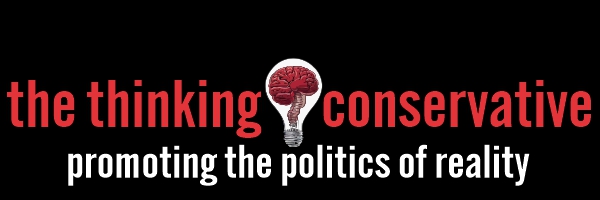The Subsidy Kings: Large Corporations, Farms & Non-Profits (Part 2)
The federal government uses its tax, borrowing, spending, and regulatory powers to control most of the economic activity in the United States. Presently, it extracts well over $3 trillion from taxpayers and redistributes their wealth to other individuals and corporations that act in ways the government promotes. The federal government and its beneficiaries use sophistry to justify a sophisticated form of money laundering that transfers massive amounts of wealth through “tax expenditures,” a euphemism for “subsidies.” These massive wealth transfers are direct gilded subsidies to the rich and favored.
While the Constitution established a federal government of limited power, those occupying its offices have dramatically expanded its powers since the establishment of the nation. Any activities it cannot reach using its enumerated, implied commerce and necessary and proper powers are controlled by the use of its tax, spending, and borrowing powers. Using tens of trillions of taxpayer dollars over the past five decades, the federal government has skillfully painted over its $35 trillion national debt by giving subsidies to the medical profession, universities, large corporations, farms, and non-profits to give the appearance of a flourishing nation. The federal subsidies make the nation appear prosperous. In reality, the nation is bankrupt, and the recipients of federal largess are the new socialists.
Mark Twain coined the term “The Gilded Age” to describe the United States in the late 1800s, a period like today of rapid economic growth that created great wealth inequality, a flood of immigration, rapid technological innovation (an electric lighting utility, a giant communications network, and transcontinental railroads vs. today’s artificial intelligence) and corrupt politics. The term “Gilded” is derived from “Gild,” which means to coat something with a gold-colored substance to give a deceptively luxurious appearance. The Gilded Age economy hid its underlying economic decay in gold-colored paint. Today, government subsidies to select groups and the transfer of its national debt to our children hide the nation’s economic decay.
Subsidies are given to select categories of taxpayers. These benefits come in the form of specials exclusions, exemptions, or deductions from gross income or provide a special credit, a preferential rate of tax, or a deferral of tax liability. These tax expenditures, a term used to describe the reduction of taxes for those individuals and corporations that comply with the federal government’s wishes, essentially function as subsidies.
These subsidies apply to almost all aspects of modern life. There are tax credits for electric vehicles, solar panels, wind farms, and child care; deductions for mortgage interest and charitable giving; institutions such as universities that operate tax-free; exclusions for employer-paid health care; lower tax rates for capital gains and carried interest income for hedge fund managers; and tax deferrals for educational and retirement savings. A study by the Cato Institute reported over 2000 federal subsidies for individuals and businesses in 2010. By 2023, that number rose to 2,418.
In the 2024 presidential campaign, there are promises to exempt from income, tips, social security income, and overtime pay, to increase the childcare tax credit, and provide direct cash grants to first-time home buyers. These subsidies are nothing more than bribes for votes. Millions of taxpayers get these subsidies, and millions of other taxpayers pay for them in higher taxes.
In many instances, the government does not even know the cost of the subsidy since anyone who meets the criteria gets the subsidy. Biden’s Inflation Reduction Act (‘IRA’) illustrates the federal government’s economic deceit. Congress estimated the green subsidies in the IRA to cost $391 billion between 2022 and 2031. A year later, based on applications, Goldman Sachs calculated that it would cost the government over $1.2 trillion in that period. Cato estimates it could run as high as $2.5 -$3 trillion.
Tragically, the subsidies have yet to reduce the cost of education and health care or increase the sales of electric vehicles. On the contrary, the sectors receiving the subsidies use the flood of government cash and their favored status to continuously raise the price of the goods and services they provide.
Part I focuses on subsidies to the medical profession and universities. Part II focuses on the American business community, farming, and non-profits. Both articles highlight the growth of socialism in America.
The medical profession tops the list of socialists. Other than government workers, the subsidies to the medical profession guarantee high incomes. The federal government spent $1.5 trillion on health care in 2022. The government subsidizes almost every sector of the health profession. About twenty-five percent of the subsidies are in the form of employer—and employee-paid health insurance premiums. These payments are excluded from taxable income, which reduces the income subject to federal taxation. This tax benefit is estimated to be $300 billion to its recipients.
Additionally, the federal government spent $747 billion on Medicare; Medicaid and children’s health insurance providers received $606 billion; veterans’ healthcare received $111 billion; Affordable Health Care received $76 billion; and many other health-related programs, such as health savings accounts, medical insurance for the self-employed, workers compensation, military dependents, and retirees, rounded out the subsidized party list.
The $1.5 trillion of government subsidies ensures that health professionals are the highest-paid profession in the U.S. Moreover, U.S. doctors are the highest-paid in the world, averaging $352,000 per year. Doctors in Canada earn $273,000 and in Germany $160,000; however, doctors around the globe earn significantly less. For example, in Italy, they make $64,000; in Portugal, $44,000; and in Mexico, $19,000.
Universities not only teach socialism; they are a prime beneficiary of it. Colleges and universities receive almost $375 billion from the federal government through scholarships, work-study loans for student educational expenses, grants and contracts, and research and development. The universities receiving the largest share of federal grants are the universities that need federal money the least. With an endowment of $51 billion, Harvard received $179 million in 2018. Columbia received $165 million, with an endowment of $19 billion. Many other top schools with endowments in the billions receive federal subsidies.
The most significant federal contracts to universities include Cal Tech, $2.4 billion; University of California at Berkeley, $992 million; MIT, $940 million; Stanford, $565 million; and many more.
In addition, in 2022-2023, students borrowed $15 billion from the federal government through student loans. The total student debt owed to the federal government is now $1.74 trillion. Student loan receivables are the largest asset of the federal government. Compounding the problems in the federal student loan program, it is a money loser for the federal government. A 2021 GAO study found that as of 2021, the program cost the federal government an estimated $197 billion. These amounts do not include the $167 billion of student loan forgiveness from the Biden administration.
Moreover, charitable contributions to colleges and universities are tax deductible, as are student scholarship and fellowship income, student loan interest, qualified tuition programs such as an Educational IRA, interest on savings bonds, and employer-provided educational expenses.
Colleges and universities are also exempt from paying local property taxes in all 50 states.
Overall, taxpayer subsidies range from around $8,000 to more than $100,000 for each bachelor’s degree awarded, with the average being around $60,000 per degree.
For perspective, the almost $2 trillion in subsidies given to these two sectors of the economy is the equivalent of one-third of the entire federal budget. These subsidies increase the cost of visiting doctors and hospitals, increase university tuition, force the hiring more administrators, and a massive number of highly paid Diversity, Equity, and Inclusion staff. These “professionals” all enjoy a good life on federal subsidies given to them by taxpayers who receive little in return other than inflated medical bills and college tuition their students cannot afford.
Martin Luther King captures the essence of government subsidies:
[S]ocialism for the rich and rugged free market capitalism for the poor.
Part II will address the subsidies given to corporations, large farms, and non-profits.
William L. Kovacs, author of Devolution of Power: Rolling Back the Federal State to Preserve the Republic. It received 5 stars from Readers’ Favorite. His previous book, Reform the Kakistocracy, received the 2021 Independent Press Award for Political/Social Change. He served as senior vice president for the U.S. Chamber of Commerce and chief counsel to a congressional committee. He can be contacted at wlk@ReformTheKakistocracy.com
The Subsidy Kings: Large Corporations, Farms & Non-Profits (Part 2)








